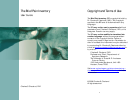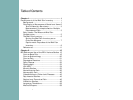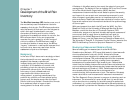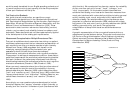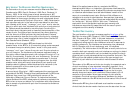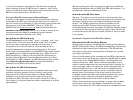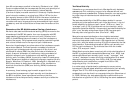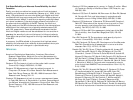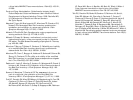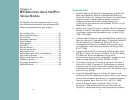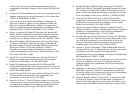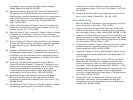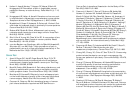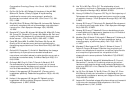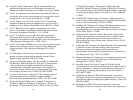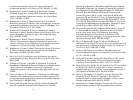
11
Test-Retest Reliability and Alternate-Forms Reliability: the Hindi
Translation
Finally, one study combined an examination of both test-retest
reliability and alternate-forms reliability (Saxena et al., 1999). In this
study, 100 patients with cancer who spoke both English and Hindi
completed both language versions of the BPI on different days in a
counterbalanced design. In addition to reporting reliability based
on internal consistency, the study design allowed calculation of
the alternate-forms reliability of the BPI. Treating the Hindi and
English versions of the BPI as alternate test forms, the alternate-form
reliabilities of the interference and severity subscales were 0.88
and 0.95, respectively. These reliabilities demonstrated that the
Hindi and English versions could be substituted for one another in
assessing the severity of pain and its impact in bilingual patients.
These data also provided support for the high test-retest reliability
of the BPI.
In summary, the BPI is reliable to the extent that high test-retest
reliability and alternate-form reliability is demonstrated when pain
is stable or when pain changes in a predictable way.
References
American Psychological Association, American Educational
Research Association, National Council on Measurement in
Education. Standards for Educational and Psychological Tests.
Washington DC: 1974.
Cleeland CS. The impact of pain on the patient with cancer.
Cancer 54(11 Suppl): 2635-2641, 12/1984.
Cleeland CS. Measurement of pain by subjective report. In:
Chapman CR, Loeser JD, editors. Issues in Pain Measurement.
New York: Raven Press; pp. 391-403, 1989 Advances in Pain
Research and Therapy; Vol. 12.
Cleeland CS. Assessment of pain in cancer: measurement issues.
In: Foley KM, Bonica JJ, Ventafridda V, editors. Proceedings of
the Second International Congress on Cancer Pain. New York:
Raven Press; pp. 47-55, 1990 Advances in Pain Research and
Therapy; Vol. 16.
12
Cleeland CS. Pain assessment in cancer. In: Osoba D, editor. Effect
of Cancer on Quality of Life. Boca Raton: CRC Press, Inc.; pp.
293-305, 1991.
Cleeland CS, Gonin R, Hatfield AK, Edmonson JH, Blum RH, Stewart
JA, Pandya KJ. Pain and its treatment in outpatients with
metastatic cancer. N Engl J Med 330(9): 592-596, 3/1994.
Cleeland CS, Nakamura Y, Mendoza TR, Edwards KR, Douglas J,
Serlin RC. Dimensions of the impact of cancer pain in a four
country sample: new information from multidimensional
scaling. Pain 67(2-3): 267-273, 10/1996.
Cleeland CS, Ryan KM. Pain assessment: global use of the Brief
Pain Inventory. Ann Acad Med Singapore 23(2): 129-138,
3/1994.
Daut RL, Cleeland CS. The prevalence and severity of pain in
cancer. Cancer 50(9): 1913-1918, 11/1982.
Daut RL, Cleeland CS, Flanery RC. Development of the Wisconsin
Brief Pain Questionnaire to assess pain in cancer and other
diseases. Pain 17(2): 197-210, 10/1983.
Dworkin RH, Turk DC, Farrar JT, Haythornthwaite JA, Jensen MP,
Katz NP, Kerns RD, Stucki G, Allen RR, Bellamy N, Carr DB,
Chandler J, Cowan P, Dionne R, Galer BS, Hertz S, Jadad AR,
Kramer LD, Manning DC, Martin S, McCormick CG, McDermott
MP, McGrath P, Quessy S, Rappaport BA, Robbins W, Robinson
JP, Rothman M, Royal MA, Simon L, Stauffer JW, Stein W, Tollett
J, Wernicke J, Witter J. Core outcome measures for chronic
pain clinical trials: IMMPACT recommendations. Pain 113(1-2):
9-19, 1/2005.
Dworkin RH, Turk DC, Wyrwich KW, Beaton D, Cleeland CS, Farrar
JT, Haythornthwaite JA, Jensen MP, Kerns RD, Ader DN,
Brandenburg N, Burke LB, Cella D, Chandler J, Cowan P,
Dimitrova R, Dionne R, Hertz S, Jadad AR, Katz NP, Kehlet H,
Kramer LD, Manning DC, McCormick C, McDermott MP,
McQuay HJ, Patel S, Porter L, Quessy S, Rappaport BA,
Rauschkolb C, Revicki DA, Rothman M, Schmader KE, Stacey
BR, Stauffer JW, von ST, White RE, Witter J, Zavisic S. Interpreting
the clinical importance of treatment outcomes in chronic pain



